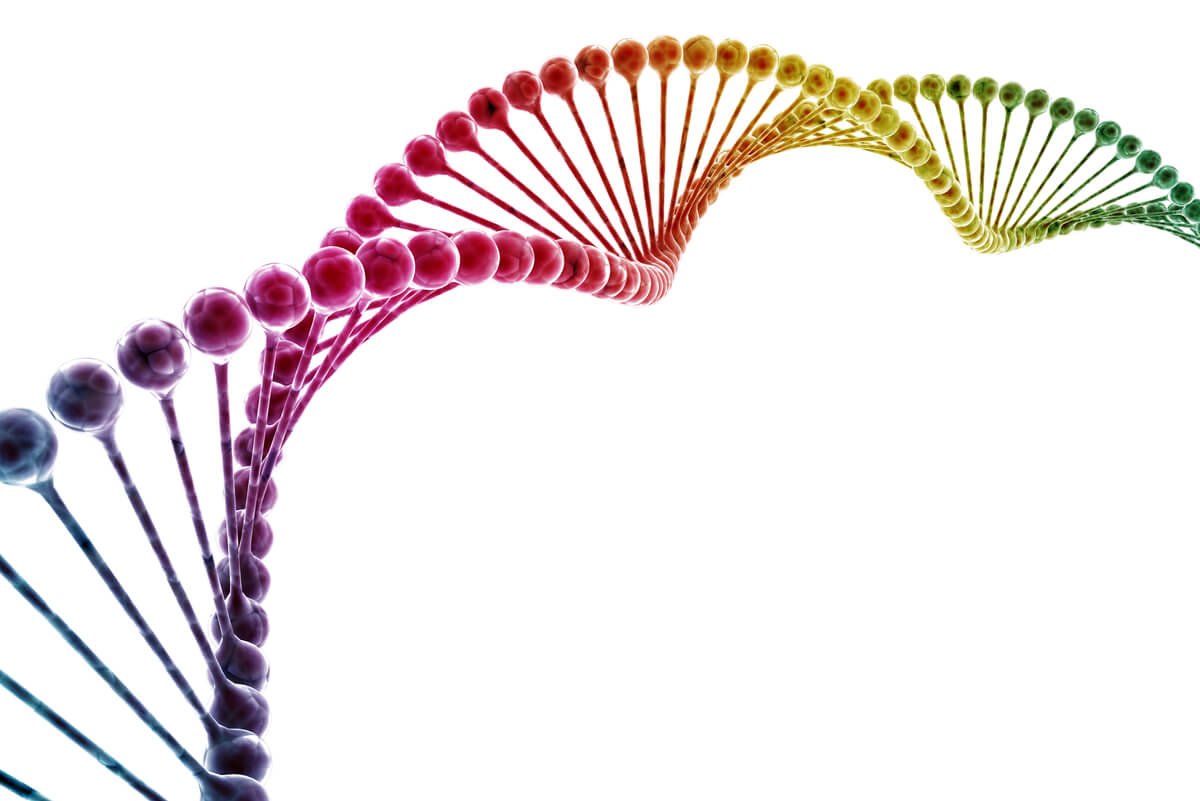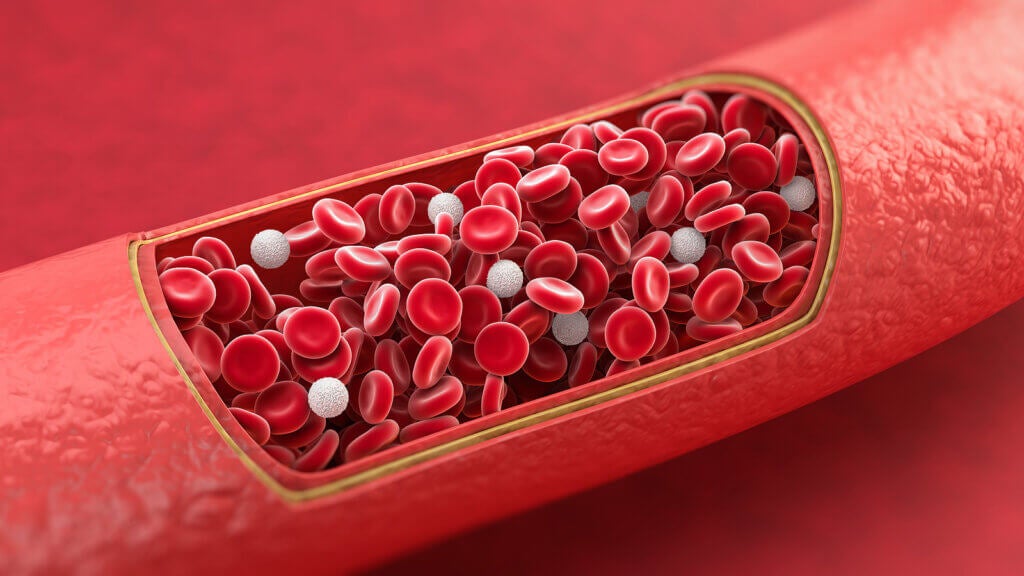Causes and Risk Factors of Celiac Disease

According to estimates by the Celiac Disease Foundation, 1 in 100 people has celiac disease. Its prevalence in the world has increased in recent decades, perhaps due to a greater increase in serology tests (as the evidence indicates).
Although the causes of celiac disease aren’t very clear, it’s believed to be a combination of genetic, environmental, and dietary factors.
Also known as gluten intolerance (although really they’re two different conditions) it’s very prevalent in the European continent, especially in countries such as Italy, Ireland, Sweden, and Finland. Today, we’ll see the reason for this relationship and we’ll find out what we know so far about its etiology.
Main causes of celiac disease
Celiac disease is an autoimmune disorder that’s triggered by the interaction of gluten with the body. Simply put, gluten is a group of proteins found in wheat, barley, rye, and their cross grains.
When a person with the disorder ingests gluten, an autoimmune response is triggered that encourages white blood cells to attack the villi in the small intestine. Over time, this coating becomes smooth and can’t absorb some nutrients. Although we understand the process, we still don’t know what causes celiac disease.
However, everything seems to indicate that it develops through a combination of genetic predispositions, environmental factors, and eating habits. Let’s get to know them now.
Genetics and celiac disease

Studies have identified several genes related to the manifestation of celiac disease. Specifically, we know that HLA alleles are in 95% of diagnosed patients. In turn, more than 40 genomic loci have been associated with the development of the autoimmune disorder.
This would explain, for example, why the disease is relatively common in children of celiac parents. Importantly, genetic predisposition increases the odds, although doesn’t guarantee it’ll develop. For example, 35% of the population have HLA alleles, but don’t manifest the condition. An external catalyst is necessary.
Genetics would also explain why the disease is more common in some areas. Evidence suggests that the highest prevalence in the world (5.6% in a Western Sahara population) could be due to the high level of consanguinity.
In turn, related alleles are relatively common in the European population, as some studies suggest. This would be a partial explanation of why the prevalence is higher in countries with European ancestry, as suggested by global prevalence rates.
Environmental factors and celiac disease
Since not all carriers of the alleles develop the disease, environmental factors have also been suggested as possible triggers. Infections are a common suggestion, as it has been shown that episodes of this type at an early age can increase the risk of contracting the disorder during adulthood.
Experts believe that infections can modify intestinal permeability, thus leading to autoimmune manifestations. Studies have suggested that rotavirus infections predispose people to develop the condition, especially those with latent genetic factors.
Although more research is still needed in this regard, it’s thought that the body misinterprets the protein sequence of rotavirus infections with those of gluten. This would cause an imbalance after ingestion.
Diet and habits in childhood
Another possible cause of celiac disease is diet, specifically either a late or early introduction of gluten into the diet. Although it’s quite a controversial point, it has been suggested that a late intake of this protein group may increase the chances of suffering from intolerance in the future.
Research estimates that an early introduction to gluten does not protect patients from the disease; it only delays the time in which it would appear. It’s possible that the relationship between infections, genetic predisposition, and eating habits play against each other as children develop in their early years.
Celiac disease risk factors

According to Johns Hopkins Medicine, celiac disease is more common in the following cases:
- Having European ancestry: Given your genetic predisposition, you’re more likely to develop the disease if you have a direct or distant ancestor in Europe.
- Having type 1 diabetes: The prevalence of celiac disease among patients with type 1 diabetes is thought to be close to 8%. This is due, in part, to the fact that both conditions have been shown to share alleles in common, which is genetically related.
- Early cessation of breastfeeding: Some studies suggest that “early weaning” can imply a lower risk of contracting the disease. However, if breastfeeding is abandoned early, and combines with other risk factors, then there are greater chances of developing it.
- The presence of other autoimmune diseases: Some indications suggest that this disorder is more common in people who suffer from other autoimmune diseases such as rheumatoid arthritis, hypothyroidism, alopecia areata, and others.
- Patients with Down syndrome: Experts have noted a prevalence of up to 43% in people with Down syndrome. This syndrome is also more prone to other autoimmune diseases.
- Irritable bowel syndrome (IBS): Finally, evidence supports the hypothesis that patients with IBS are more likely to develop this autoimmune disorder. In fact, serology tests are frequent in these groups in order to rule out celiac disease.
Complementing all this, research has indicated that stressful episodes are common prior to diagnosis of the disease or the onset of symptoms. This catalyst could be added to the others as backing up the evidence that affirms celiac disease as having many different causes.
Go to the doctor in case of doubt
Every diagnosed patient should know that this condition currently has no cure. A change in diet allows the person to live normally without any sequelae associated with the disease. If you suspect that you may be suffering from it, then don’t hesitate to consult a specialist in order to carry out the diagnostical tests.
According to estimates by the Celiac Disease Foundation, 1 in 100 people has celiac disease. Its prevalence in the world has increased in recent decades, perhaps due to a greater increase in serology tests (as the evidence indicates).
Although the causes of celiac disease aren’t very clear, it’s believed to be a combination of genetic, environmental, and dietary factors.
Also known as gluten intolerance (although really they’re two different conditions) it’s very prevalent in the European continent, especially in countries such as Italy, Ireland, Sweden, and Finland. Today, we’ll see the reason for this relationship and we’ll find out what we know so far about its etiology.
Main causes of celiac disease
Celiac disease is an autoimmune disorder that’s triggered by the interaction of gluten with the body. Simply put, gluten is a group of proteins found in wheat, barley, rye, and their cross grains.
When a person with the disorder ingests gluten, an autoimmune response is triggered that encourages white blood cells to attack the villi in the small intestine. Over time, this coating becomes smooth and can’t absorb some nutrients. Although we understand the process, we still don’t know what causes celiac disease.
However, everything seems to indicate that it develops through a combination of genetic predispositions, environmental factors, and eating habits. Let’s get to know them now.
Genetics and celiac disease

Studies have identified several genes related to the manifestation of celiac disease. Specifically, we know that HLA alleles are in 95% of diagnosed patients. In turn, more than 40 genomic loci have been associated with the development of the autoimmune disorder.
This would explain, for example, why the disease is relatively common in children of celiac parents. Importantly, genetic predisposition increases the odds, although doesn’t guarantee it’ll develop. For example, 35% of the population have HLA alleles, but don’t manifest the condition. An external catalyst is necessary.
Genetics would also explain why the disease is more common in some areas. Evidence suggests that the highest prevalence in the world (5.6% in a Western Sahara population) could be due to the high level of consanguinity.
In turn, related alleles are relatively common in the European population, as some studies suggest. This would be a partial explanation of why the prevalence is higher in countries with European ancestry, as suggested by global prevalence rates.
Environmental factors and celiac disease
Since not all carriers of the alleles develop the disease, environmental factors have also been suggested as possible triggers. Infections are a common suggestion, as it has been shown that episodes of this type at an early age can increase the risk of contracting the disorder during adulthood.
Experts believe that infections can modify intestinal permeability, thus leading to autoimmune manifestations. Studies have suggested that rotavirus infections predispose people to develop the condition, especially those with latent genetic factors.
Although more research is still needed in this regard, it’s thought that the body misinterprets the protein sequence of rotavirus infections with those of gluten. This would cause an imbalance after ingestion.
Diet and habits in childhood
Another possible cause of celiac disease is diet, specifically either a late or early introduction of gluten into the diet. Although it’s quite a controversial point, it has been suggested that a late intake of this protein group may increase the chances of suffering from intolerance in the future.
Research estimates that an early introduction to gluten does not protect patients from the disease; it only delays the time in which it would appear. It’s possible that the relationship between infections, genetic predisposition, and eating habits play against each other as children develop in their early years.
Celiac disease risk factors

According to Johns Hopkins Medicine, celiac disease is more common in the following cases:
- Having European ancestry: Given your genetic predisposition, you’re more likely to develop the disease if you have a direct or distant ancestor in Europe.
- Having type 1 diabetes: The prevalence of celiac disease among patients with type 1 diabetes is thought to be close to 8%. This is due, in part, to the fact that both conditions have been shown to share alleles in common, which is genetically related.
- Early cessation of breastfeeding: Some studies suggest that “early weaning” can imply a lower risk of contracting the disease. However, if breastfeeding is abandoned early, and combines with other risk factors, then there are greater chances of developing it.
- The presence of other autoimmune diseases: Some indications suggest that this disorder is more common in people who suffer from other autoimmune diseases such as rheumatoid arthritis, hypothyroidism, alopecia areata, and others.
- Patients with Down syndrome: Experts have noted a prevalence of up to 43% in people with Down syndrome. This syndrome is also more prone to other autoimmune diseases.
- Irritable bowel syndrome (IBS): Finally, evidence supports the hypothesis that patients with IBS are more likely to develop this autoimmune disorder. In fact, serology tests are frequent in these groups in order to rule out celiac disease.
Complementing all this, research has indicated that stressful episodes are common prior to diagnosis of the disease or the onset of symptoms. This catalyst could be added to the others as backing up the evidence that affirms celiac disease as having many different causes.
Go to the doctor in case of doubt
Every diagnosed patient should know that this condition currently has no cure. A change in diet allows the person to live normally without any sequelae associated with the disease. If you suspect that you may be suffering from it, then don’t hesitate to consult a specialist in order to carry out the diagnostical tests.
- Catassi, C., Gatti, S., & Lionetti, E. World perspective and celiac disease epidemiology. Digestive diseases. 2015; 33(2): 141-146.
- Ciacci, C., Siniscalchi, M., Bucci, C., Zingone, F., Morra, I., & Iovino, P. Life events and the onset of celiac disease from a patient’s perspective. Nutrients. 2013; 5(9): 3388-3398.
- Cohn, A., Sofia, A. M., & Kupfer, S. S. Type 1 diabetes and celiac disease: clinical overlap and new insights into disease pathogenesis. Current diabetes reports. 2014; 14(8): 517.
- El-Salhy, M., Lomholt-Beck, B., & Gundersen, D. The prevalence of celiac disease in patients with irritable bowel syndrome. Molecular Medicine Reports. 2011; 4(3): 403-405.
- Ivarsson A, Hernell O, Stenlund H, Persson LA. Breast-feeding protects against celiac disease. Am J Clin Nutr. 2002 May;75(5):914-21.
- Lionetti E, Castellaneta S, Francavilla R, Pulvirenti A, Tonutti E, Amarri S, Barbato M, Barbera C, Barera G, Bellantoni A, Castellano E, Guariso G, Limongelli MG, Pellegrino S, Polloni C, Ughi C, Zuin G, Fasano A, Catassi C; SIGENP (Italian Society of Pediatric Gastroenterology, Hepatology, and Nutrition) Working Group on Weaning and CD Risk. Introduction of gluten, HLA status, and the risk of celiac disease in children. N Engl J Med. 2014 Oct 2;371(14):1295-303.
- Lionetti, E., & Catassi, C. The role of environmental factors in the development of celiac disease: what is new?. Diseases. 2015; 3(4): 282-293.
- Murray JA, Van Dyke C, Plevak MF, Dierkhising RA, Zinsmeister AR, Melton LJ 3rd. Trends in the identification and clinical features of celiac disease in a North American community, 1950-2001. Clin Gastroenterol Hepatol. 2003 Jan;1(1):19-27.
- Myléus, A., Hernell, O., Gothefors, L., Hammarström, M. L., Persson, L. Å., Stenlund, H., & Ivarsson, A. Early infections are associated with increased risk for celiac disease: an incident case-referent study. BMC pediatrics. 2012; 12(1): 1-8.
- Sanchez-Mazas A, Nunes JM, Middleton D, Sauter J, Buhler S, McCabe A, Hofmann J, Baier DM, Schmidt AH, Nicoloso G, Andreani M, Grubic Z, Tiercy JM, Fleischhauer K. Common and well-documented HLA alleles over all of Europe and within European sub-regions: A catalogue from the European Federation for Immunogenetics. HLA. 2017 Feb;89(2):104-113.
- Smyth, D. J., Plagnol, V., Walker, N. M., Cooper, J. D., Downes, K., Yang, J. H., … & Todd, J. A. Shared and distinct genetic variants in type 1 diabetes and celiac disease. New England Journal of Medicine. 2008; 359(26): 2767-2777.
- Stene LC, Honeyman MC, Hoffenberg EJ, Haas JE, Sokol RJ, Emery L, Taki I, Norris JM, Erlich HA, Eisenbarth GS, Rewers M. Rotavirus infection frequency and risk of celiac disease autoimmunity in early childhood: a longitudinal study. Am J Gastroenterol. 2006 Oct;101(10):2333-40.
- Singh, P., Arora, A., Strand, T. A., Leffler, D. A., Catassi, C., Green, P. H., … & Makharia, G. K. Global prevalence of celiac disease: systematic review and meta-analysis. Clinical Gastroenterology and Hepatology. 2018; 16(6): 823-836.
- Sollid LM, Lie BA. Celiac disease genetics: current concepts and practical applications. Clin Gastroenterol Hepatol. 2005 Sep;3(9):843-51.
- Wijmenga, C., & Gutierrez-Achury, J. Celiac disease genetics: past, present and future challenges. Journal of pediatric gastroenterology and nutrition. 2014; 59: S4-S7.
- Zubillaga, P., Vitoria, J. C., Arrieta, A., Echaniz, P., & Garcia-Masdevall, M. D. Down’s syndrome and celiac disease. Journal of Pediatric Gastroenterology and Nutrition. 1993; 16(2): 168-171.
Este texto se ofrece únicamente con propósitos informativos y no reemplaza la consulta con un profesional. Ante dudas, consulta a tu especialista.







